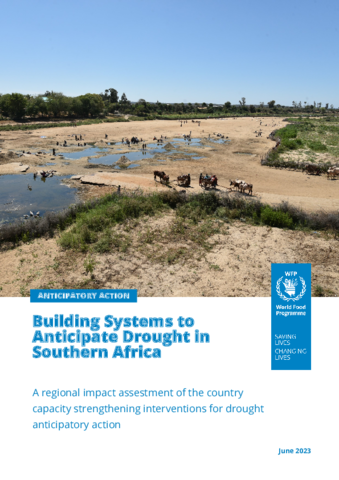
This comparative analysis highlights common trends, key best practices, and lessons learned over the past three years of this programme, as significant advances have been made in national forecasting capacities, early warning systems, developing Anticipatory Action Plans (AAPs), defining linkages to social protection systems, and establishing and strengthening national communities of practice for anticipatory action.
As such, this case study contributes to the growing literature on Anticipatory Action and provides more data on how international and local partners can support governments to sustainably institutionalise anticipatory action in their own disaster risk management systems and frameworks.
